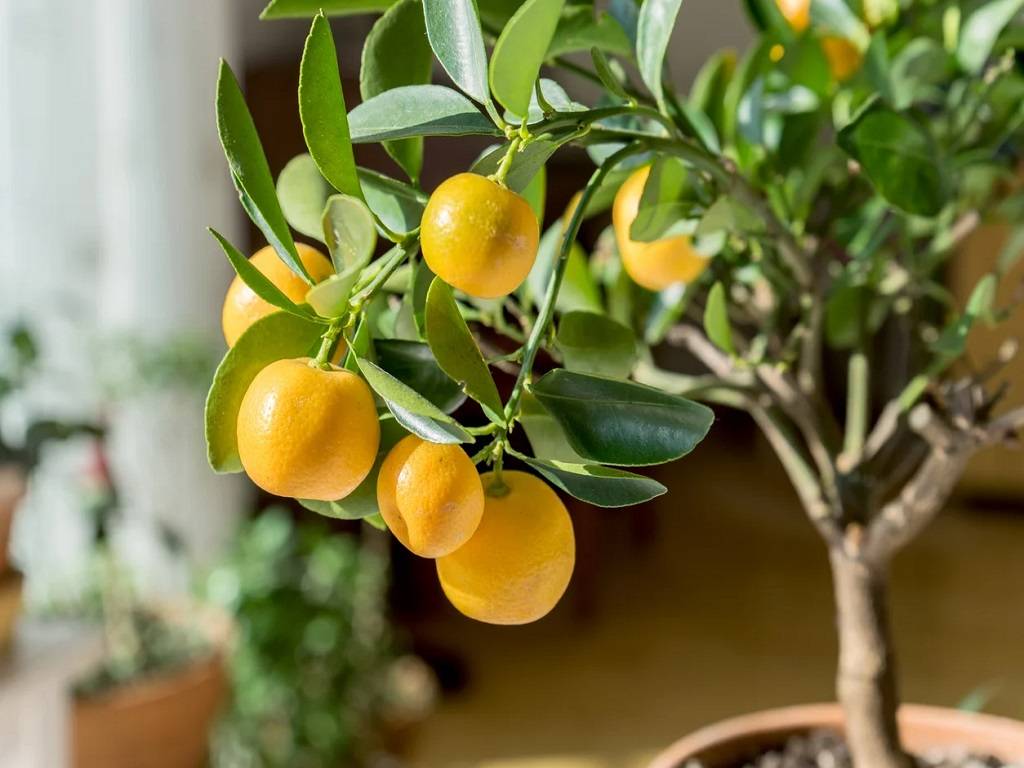
If you already have popular indoor plants like a spider plant, Monstera Adansonia, rubber tree, snake plant, and others in your house, you probably want something that stands out. If you can manage its maintenance, that something might be an indoor fruit tree. They can bear fruit that is ideal for everything from classic cuisine to cocktails, in addition to looking nice potted in a corner. They are cheerful, and colorful, and come in many beautiful types.
Especially during the gloomier months, bringing an indoor citrus tree inside the house is a great way to add a touch of sunshine to your decor. Nothing is more captivating in the late winter than the fragrance of citrus blossoms.
What are Citrus Trees?
Citrus trees are tropical and subtropical climate-specific species. Since they cannot tolerate freezing, even a little exposure to freezing conditions for a few hours will cause harm to their leaves and fruits. The entire tree may die in colder climates. Citrus trees produce ripe fruit that is a variety of berries or a meaty, multi-seeded fruit. Citrus fruits have an inside rind that is spongier and a leatherier outer shell.
Citric acid, which has a sour taste, is present in high amounts in citrus fruits. However, due to their high levels of fruit sugar, the fruits of some species can be exceedingly sweet. Citrus juice contains a fair amount of ascorbic acid, or vitamin C. For instance, a regular orange has roughly 40 mg of vitamin C, whereas an apple only has 5 mg.
Here are some of the trees you can grow indoors:
Dwarf Mandarin Orange Tree
They belong to a unique species and are sometimes known as ‘kid-glove’ oranges because of their thin, flimsy peeling. Depending on the variety, they can be significantly smaller or the same size as sweet oranges. The fruit has a brilliant orange to red-orange peel surrounding the sectioned, juicy flesh, giving it the appearance of a little, somewhat crushed orange.
It is one of the first citrus fruits to be harvested due to its sweet flavor and early ripening. It is moderately difficult to grow these citrus trees indoors. They do well in pots, but they need frequent fertilizing and lots of bright light. Fruit ripens from late autumn through the beginning of winter.
Dwarf Meyer Lemon Trees
Meyer lemons are a thin-skinned hybrid fruit that is partially a lemon and partially a mandarin orange, making them significantly sweeter than the typical grocery store lemon. Meyer lemon trees have fragrant white blooms that are purple at the base and lustrous, dark green leaves. Meyer lemons' skins have the same hue as an egg yolk when they are fully ripe: a light shade of yellow with a hint of orange. Chefs love Meyer lemons for their aromatic peels.
Some of the easiest citrus varieties to grow indoors are Meyer lemons. Your plant will flourish as long as you give it enough water, fertilizer, and strong sunshine.
Dwarf Key Lime Trees
The dwarf Key lime will flourish indoors when the weather lowers and will thrive during the summer, producing fragrant blossoms and the sour limes that give the famous pie its name. White, star-shaped blooms frequently accompany glossy, oblong leaves on spiky stems.
The Key Lime Tree makes a simple indoor plant that will intermittently produce flowers and fruit all year long if you can give it a sunny location.
Dwarf Kumquat Trees
The Cantonese term "gam-gwat" was the source of the English name "kumquat." Gam-gwat is a word that means "golden tangerine" or "golden orange." Small fruits with sour flesh and thin, sweet skin are produced by kumquat trees. With the right care, trees should produce fruit each winter.
As long as they receive at least six hours per day of bright, direct light, these citrus trees are fairly simple to maintain.
Dwarf Clementine Trees
Clementines are frequently regarded as a form of Mandarin orange since they are a cross between a certain variety of Mandarin orange and sweet orange. Small, delicious fruits that are perfect for snacks are available from them.
A beautiful, circular canopy of year-round, dark green leaves covers clementine trees. Fresh orange fruits that are available to be gathered from November to January are produced from fragrant white flowers that bloom in the spring. Clementine trees don't typically need to be pruned. However, you should cut off any dead, sick, or injured limbs right away.
Kaffir Lime Trees: In its native Southeast Asian habitat, kaffir lime is also known as Kieffer lime, Thai lime, makrut, and wild lime. Whatever name you choose, growing this indoor fruit tree is a treat because of its lemony scent and distinctive appearance.
If you don't want the fruit, caring for the plant is not too difficult. Watch it grow by providing a lot of bright light and regular fertilization. When your citrus tree begins to grow again in the spring, prune it back.










